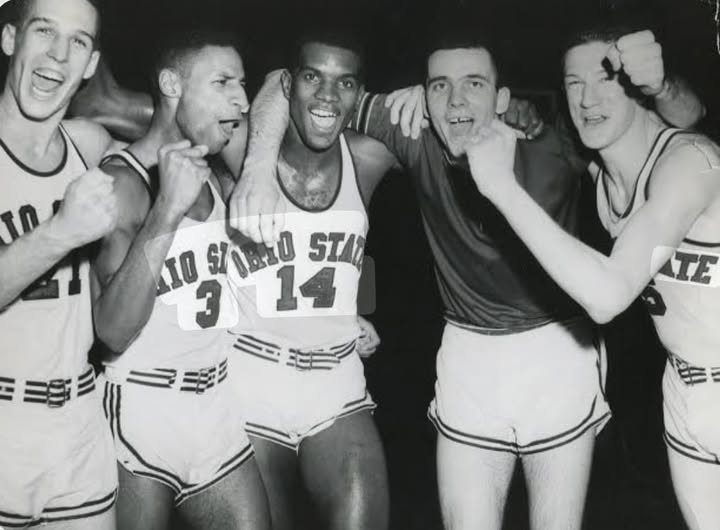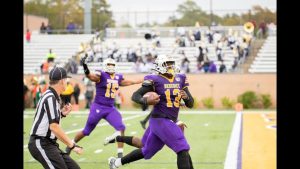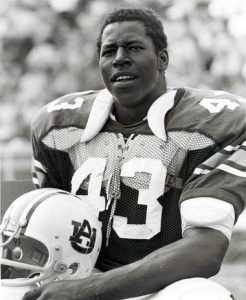
In the annals of college basketball history, few teams have left a mark as enduring and inspiring as the 1960 Ohio State Buckeyes. Their journey to the NCAA Championship was more than just a string of wins; it was a powerful testament to unity, trust, and an unbreakable brotherhood. The legacy they forged did not arise from mere talent alone but from a collective spirit that transcended individual prowess. At the heart of this golden chapter stood Joe Roberts, the starting forward wearing number 14, whose presence on the court was as commanding as his commitment off it.
The 1960 Buckeyes team was laden with talent that could have easily turned inward, driven by individual glory. Names like Jerry Lucas, Larry Siegfried, and Mel Nowell often headline the story of that championship, their skills dazzling the fans and confounding opponents. Yet, amid this constellation of stars, it was the cohesion—the sense of brotherhood—that made this team different. They were not just players brought together by recruitment or circumstance. They were a family, united in their ambition and their belief in one another.
Joe Roberts’ role on the team was pivotal. Known for his power and presence as a forward, he was the embodiment of grit and determination. But what made Roberts stand out wasn’t just his physicality or his skill. It was the way he embodied the team’s spirit. On a roster filled with exceptional athletes, Roberts brought a level of consistency and selflessness that galvanized the group. He understood that championships aren’t won by a single individual but by a collective willing to put the team above themselves.
The foundation for the Buckeyes’ brotherhood was laid long before they hoisted the championship trophy. Practices were grueling, and the coaching staff demanded excellence, discipline, and above all, unity. The team’s coach, Fred Taylor, was a master not only of strategy but of building character. He cultivated a culture where every player was accountable, every contribution mattered, and where the collective goal eclipsed personal ambitions. Taylor’s leadership forged a mentality that no matter the adversity, the team would stand together.
The bond between players extended beyond the hardwood. They shared countless hours together, studying game film, refining plays, and pushing each other to be better. These moments weren’t just about basketball; they were about building trust and understanding. Roberts, along with his teammates, learned the importance of relying on one another, knowing that the difference between victory and defeat often lay in the moments when they had each other’s backs. This trust became their most valuable asset.
The season itself was a testament to their resilience. The Buckeyes faced formidable opponents, each game demanding their full effort and will. But time and again, they overcame challenges by leaning on their brotherhood. When Jerry Lucas would dominate inside, Roberts and others made the crucial plays on defense or set screens that opened opportunities for teammates. When Siegfried orchestrated the offense with his sharp passing, Roberts was there to crash the boards and convert rebounds into second-chance points. Every player knew their role, accepted it, and executed it with precision.
What made the 1960 championship run remarkable wasn’t just the skill or the statistics, but the chemistry that permeated every play. The team moved fluidly, anticipating each other’s actions and complementing strengths. This chemistry was the result of countless hours of shared struggle, of wins and losses that were experienced together. Through highs and lows, the players’ bond grew stronger, fostering a spirit of mutual respect and unwavering commitment.
In the championship game itself, the stakes couldn’t have been higher. The pressure was immense, but the Buckeyes didn’t waver. They played not just for themselves, but for each other and for the legacy of Ohio State basketball. Roberts and his teammates demonstrated an almost intuitive understanding on the court, their movements synchronized like a well-rehearsed symphony. Every pass, every rebound, every shot was a product of teamwork. It was a victory forged in the fires of brotherhood.
When the final buzzer sounded and the Buckeyes secured their place as NCAA Champions, the celebration was not simply about the trophy. It was a celebration of a journey taken together—a journey defined by sacrifice, trust, and unity. Joe Roberts and his teammates had done more than win a title; they had built a legacy that would inspire generations to come. Their story became a reminder that champions aren’t born—they’re built, forged by shared goals and unyielding belief in one another.
In the years since that historic season, the 1960 Buckeyes have been remembered not just for their basketball prowess, but for their embodiment of what it means to be a team. Their brotherhood set a standard, a benchmark for what teams aspire to become. Players who followed them at Ohio State and beyond have looked back on that team as a model of cohesion and character.
Joe Roberts’ contributions, both on and off the court, have remained a shining example of leadership through humility and determination. He never sought the spotlight, but his impact was felt in every win, every practice, and every moment of adversity that the team overcame. His story reminds us that true greatness often lies in the unheralded roles, in the players who do the dirty work and inspire through quiet strength.
The 1960 Buckeyes’ championship was not a singular event but the culmination of countless small moments of unity. It was in the way teammates encouraged each other after mistakes, how they celebrated each other’s successes, and how they kept pushing forward when the odds seemed stacked against them. Their legacy is a testament to the power of brotherhood in sports and in life.
Today, as fans and historians look back on Ohio State’s storied basketball history, the 1960 team remains a golden chapter. The image of Joe Roberts and his teammates celebrating their championship still resonates—not just as a moment frozen in time but as a symbol of what can be achieved when talent is united by trust and shared purpose. They showed the world that a team built on brotherhood is a team destined for greatness.
United in victory, the 1960 Buckeyes did more than win a title. They created a lasting legacy that continues to inspire. Their story is a powerful reminder that championships are won not just by skill but by the bonds forged in pursuit of a common dream. They proved that when a team believes in each other, when they become brothers in every sense of the word, greatness follows.





